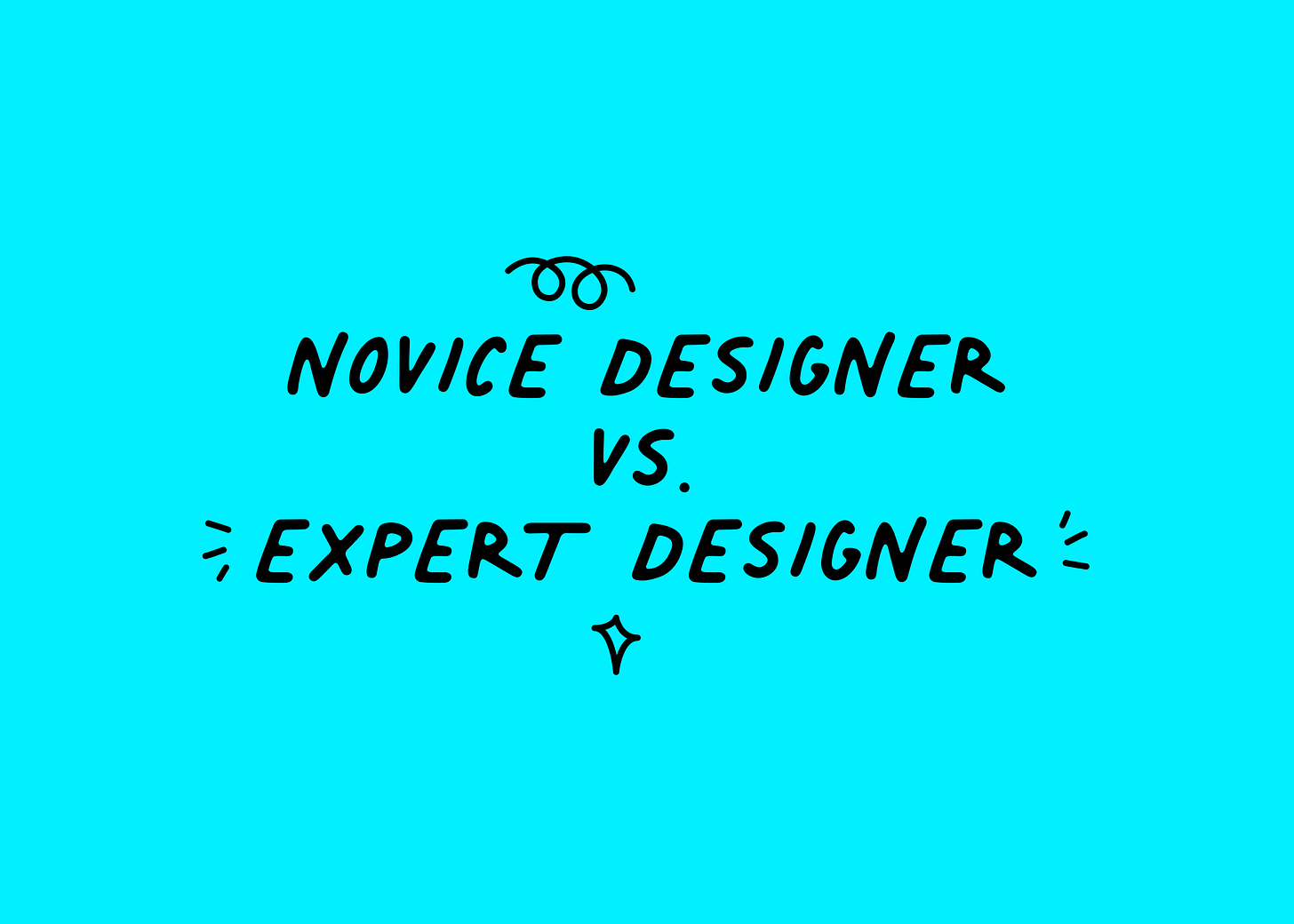You’ve probably seen a lot of posts about good vs. great designers or novice vs. expert.
The reason I’m bringing up this topic is that I’ve been on a quest researching design qualities and competencies that won’t be easily replaced by machines.
The prevailing narrative will be AI taking over junior or even mid-level roles1, or opinions like 'there is legitimately no reason to use Figma anymore.'2
So, the question is: where in the process can designers bring the most value?
If AI today can/will handle junior-level roles at an okay-ish level, then maybe we should focus on what quality looks like for more experienced or expert designers. Perhaps what we now see as great or expert-level qualities will soon become the new normal.
I want to share a summary of the differences between novice and expert designers from Nigel Cross, who has researched this topic across multiple studies3.
Design Buddy is a free publication supported by readers like you. Subscribe to have my next post delivered directly to your inbox.
😊 Novice Designers:
Take the problem as it is, without questioning or reframing it.
Jump straight into specific details without stepping back.
End up with disconnected pieces rather than a smooth, cohesive solution.
😎 Expert Designers:
Look at the big picture and often reframe the problem.
Explore different angles and possibilities before locking in on details.
Think about context, parallel solutions, and long-term impact to make better design decisions.
😊 Novice Designers:
Try to fully define the problem first, delaying actual design work.
End up overthinking and struggling to move forward.
😎 Expert Designers:
Start with early solution ideas to help define and refine the problem.
Take control by framing the problem and directing their search for solutions.
😊 Novice Designers:
Either don’t gather enough or collect too much without knowing how to use it.
Spend more time on endless research instead of actual designing.
😎 Expert Designers:
Gather the right amount of information to understand the bigger picture.
Use information strategically to guide design decisions.
😊 Novice Designers:
Work in a step-by-step, rigid way, struggling to jump between phases.
Get stuck in one mode (like problem definition) and find it hard to transition.
😎 Expert Designers:
Switch smoothly between brainstorming, prototyping, testing, and refining.
Keep an eye on the whole process instead of getting stuck on one part.
😊 Novice Designers:
Rely on trial-and-error, making constant tweaks without much planning.
Get stuck in rework loops, slowing progress and reducing efficiency.
😎 Expert Designers:
Think ahead and weigh options before making decisions.
Switch between broad and deep thinking, depending on complexity and uncertainty.
Although AI won’t take over design jobs anytime soon and our job will likely remain the same for the next few months or even a couple of years. Take this as an opportunity to check in with yourself and see where you stand.
So, my invitation to you: pause for a moment and reflect.
Where are you in your journey?
Which areas need more of your attention?
Once you have a picture of where you are, let me know the one thing you want to improve. If you have more than one, pick the one that feels most important.
This will also help me tailor the content I create for you. Plus, you'll get a sense of what others are working on too.
Until next time.
Cheers,
Thomas
Note: You might also be interested in checking out competency rubrics for each career level of a designer from companies like Figma or Intercom.
You can show your support by clicking the heart button ❤️ or sharing this with a friend, colleague, or fellow designer! It helps me spread this newsletter and reach more people. Thank you!















